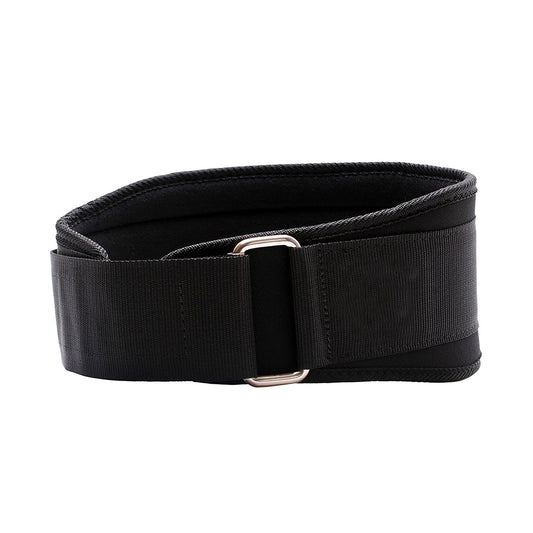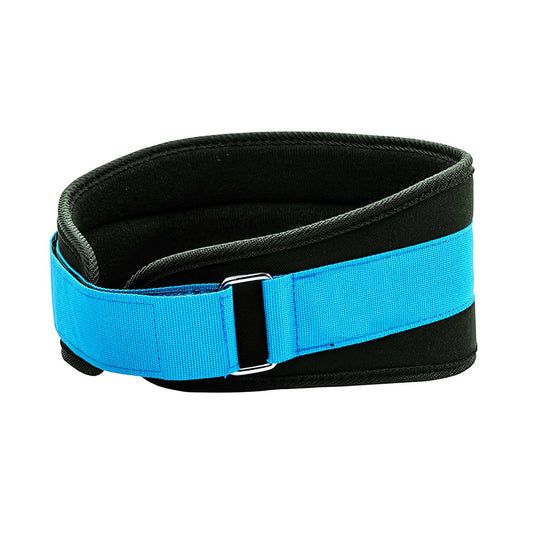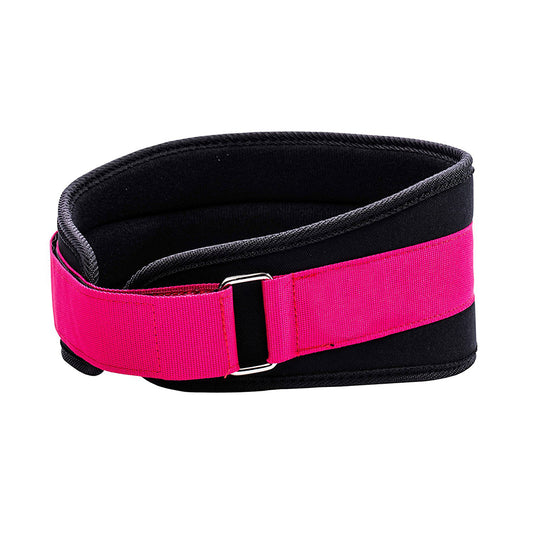Weightlifting belts are a common practice in strength, strength, and functional fitness exercises. At first, they were mainly used by Olympic weightlifters and powerlifters, but more recently they have become more popular among recreational weightlifters of all fitness levels.
Although they help and provide benefits for those strength training workouts, the recent increase in popularity has made them one of the most abused fitness accessories. It begs the question, are weightlifting belts even good for recreational weightlifting? The answer is yes, but if used correctly and for the correct type of training.
So before you buy one of our weightlifting belts, learn more about why they were used in the first place and how to use them so you can properly maximize your workouts!
How Weightlifting Belts Work
A common concept about weightlifting belts is that they support the back to help prevent injury while performing heavy lifts. While this is true, a lifting belt won't necessarily provide you with support. It depends more on how the body responds to the belt that provides support for the spine.
The lift belt is tied around the waist to give your abs a wall to push. The added force of the confined space increases intra-abdominal pressure, which provides support to the spine to help stabilize it. It also creates a rigid wall around the lower torso, connecting the ribcage to the hips, which helps prevent back hyperextension and any other flexing and twisting that could lead to injury.
Essentially, the belt is the core muscles, so when you use the belt, it's like having an extra set of muscles. In case you didn't know, a strong core helps keep you upright and requires better overall strength. That's why wearing a weightlifting belt often gives lifters a better understanding of their back position and the muscles that need to be activated to maintain good posture. Overall, it allows lifters to feel more secure and confident when using the belt to lift weights.
benefit
Using a weightlifting belt won't make you stronger or automatically help you lift the heaviest thing you've ever lifted. It's not a magic tool, but using it can bring some benefits like...
-
It minimizes the risk of injury
- Maintain and increase intra-abdominal pressure throughout exercise
- Stabilizes and relieves pressure on the spine
- Can create better biomechanics
- Makes you more aware of your form and reminds you to stay nervous
- Can provide confidence and security
- How to properly use and wear a weightlifting belt
Now that we understand how belts work, it's time to discuss how to use them effectively. One of the ways to ensure that you are using your belt to its full potential is to practice proper breathing techniques.
When you lift something heavy, you need to generate a lot of force, think back to when you had to move something heavy like furniture. You usually take a deep breath and push or pull an object while holding your breath. This technique involves drawing air into the abdomen (not the chest), then exhaling forcefully with the throat closed, pushing the abdomen out into the waistband, which increases the pressure around the abdomen and allows you to lift heavier objects.
Practicing this technique is a great way to get the most out of your lifting belt, but so is wearing it properly. Remember, a good belt is designed to increase intra-abdominal pressure to stabilize your belly. This pressure is created when you press your abs against the belt, so while a weight belt is best tied tight, you need to allow a little room for this pressure.
A good rule of thumb is to wear it one hole looser than tight, so there should be a little space between your belly and the waistband, but not enough for your hands to fit between it. You want it loose enough to allow abdominal support and expansion. If it is too tight, it may hinder your ability to support your abdomen and restrict your breathing. As for the position, it's a matter of personal preference, but you should try to place it in a position that covers most of the abs and vertical muscles to allow for maximum intra-abdominal pressure. Do not place it too low or too high as this will cause pinching and discomfort. Place it an inch or two above your pelvis, making sure it covers your abdominal wall.
When to Wear a Weightlifting Belt
There is a huge debate in the fitness world about whether belts should be worn. Some people think that you should first learn how to lift heavy objects without a belt. It makes sense...a weightlifting belt doesn't make up for a weak core, but if you need to use a belt to avoid injury when lifting heavy weights, use it. Either way, before you can use the belt or even start lifting heavier weights, you need to be able to perform the movement with good form and know how to breathe to support your core. Once you feel your form is near perfect and you know how to breathe properly to support your core to increase intra-abdominal pressure, then you can start using the belt!
Weight belts are not required throughout your workout routine, and in fact, you shouldn't be wearing them all the time. If you wear too much, you'll end up relying too much on it for spine support and core stability. If you use them every time you lift, you will slowly lose abdominal strength due to the heavy reliance on the belt to lift the weights for you. To make sure this doesn't happen, you should only use them in the following two situations:
Perform maximal or submaximal lifts in exercises where the weight is supported by the lifter's back. Exercises like squats, deadlifts, and barbell rows.
Do exercises that cause hyperextension of the back, such as overhead presses.
Other than that, no belt is required. Do not use them for warm-ups, light loads, and any exercise in which the erector spinae cannot resist heavy resistance. It's only needed in these two situations, and if you really need heavy support for lower back pain or lower risk of injury, use it. Just make sure it doesn't become a crutch you're overly dependent on.





